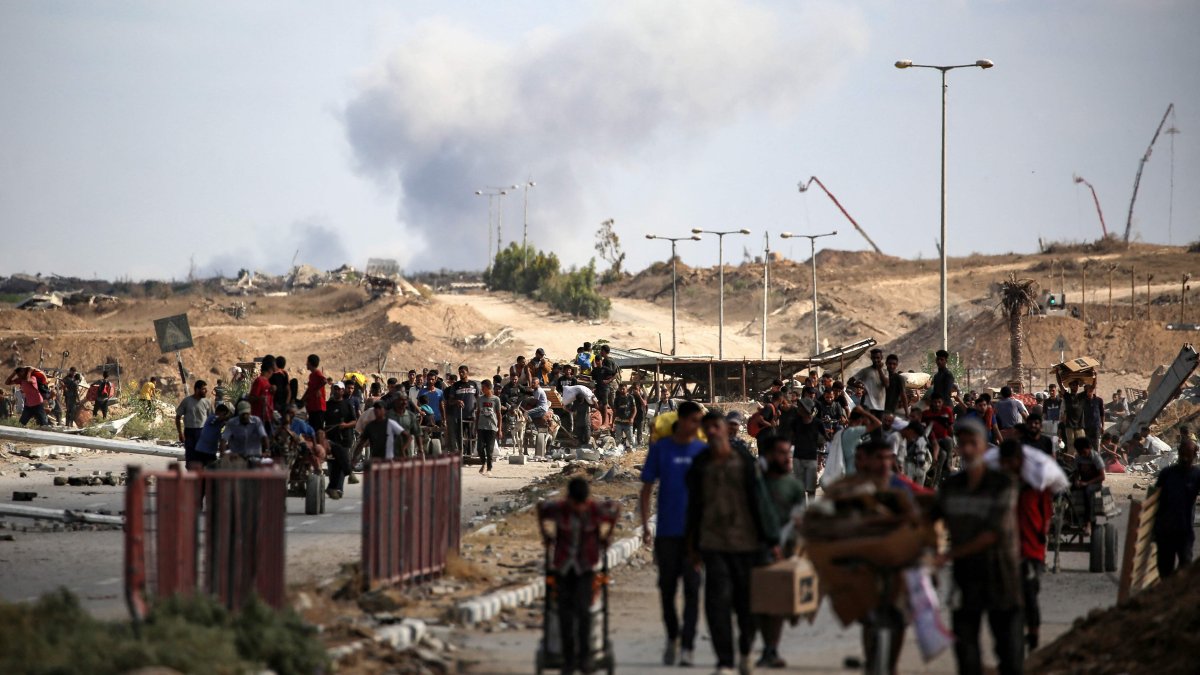The United States is weighing a new framework for delivering humanitarian aid in Gaza that would replace the much-criticized Gaza Humanitarian Foundation (GHF).
The plan, still in its conceptual stage, outlines a sweeping effort to improve aid logistics and rebuild international trust after two years of war and controversy over aid distribution in the besieged enclave.
“Multiple approaches are being considered to effectively get aid to the people of Gaza – nothing is finalized,” said a senior U.S. administration official, speaking on condition of anonymity.
The proposal is one of several being explored as Washington seeks to ramp up deliveries of food, water, and medical supplies amid warnings of famine and disease.
A fragile 13-day cease-fire has slowed down Israeli attacks and allowed limited aid convoys to enter Gaza.
However, international observers argue that the current system remains chaotic, marked by deep mistrust among donors, U.N. agencies, and the parties controlling access routes.
‘Humanitarian belt’
At the center of the proposed plan is the creation of a “Gaza Humanitarian Belt” – a network of 12 to 16 secure aid hubs positioned along the lines to which Israeli forces have withdrawn within the territory.
The concept envisions a corridor of coordinated humanitarian operations that could serve both civilians and displaced populations trapped in devastated areas.
Each hub would function as a multipurpose lifeline. In addition to distributing essential goods, the sites would host medical centers, logistics depots, mobile kitchens, and temporary shelters.
Infrastructure teams would also work from these hubs to repair power grids, restore sanitation networks, and provide potable water.
But the blueprint stretches beyond humanitarian relief. It also proposes “voluntary reconciliation facilities” where militants could surrender weapons in exchange for amnesty, and “forward operating bases” for an envisioned international stabilization force tasked with helping to demilitarize Gaza.
The proposed “operational backbone” would be managed by the U.S.-led Civil-Military Coordination Center (CMCC), recently opened to coordinate security and humanitarian flows. U.N. agencies and NGOs operating in Gaza would be required to channel all deliveries through the CMCC system within 90 days of the plan’s rollout.
Drone surveillance would monitor aid convoys, ensuring what the plan describes as “real-time oversight” to prevent looting or interference.
Washington and Israel have long accused Hamas of seizing aid shipments – allegations the group denies – and the system aims to counter such claims through constant aerial monitoring.
Risk of militarization
Despite its humanitarian framing, the plan has triggered unease among international aid organizations.
Many see echoes of the Gaza Humanitarian Foundation, which operated under U.S. and Israeli oversight and faced fierce criticism for what detractors called the militarization of aid.
“The ‘aid hubs’ they describe are very concerning as they resemble GHF sites in areas controlled by Israeli forces,” said a senior international aid official, speaking on condition of anonymity. “It risks repeating the same mistakes – blurring the line between humanitarian action and political or military agendas.”
The United Nations, along with major NGOs, had previously refused to cooperate with the GHF, citing neutrality concerns.
Before the cease-fire, Israel and the U.S. had urged the U.N. to work through the foundation, but aid groups rejected the model, warning that it undermined impartiality and forced population movements.
A U.S. official acknowledged that the current plan is just one of several options under review. “This is not a policy decision yet – it’s more like a white paper meant to explore what could be feasible under the conditions on the ground,” the official said.
Another humanitarian source familiar with the document described it as “a warmed-over version of what GHF tried to do,” adding that its circulation was “premature” and did not yet reflect finalized U.S. government policy.
GHF’s replacement?
Under the draft, the GHF would be “absorbed or replaced” by other humanitarian actors – notably the UAE and Morocco Red Cross and Samaritan’s Purse, an evangelical Christian organization based in the U.S.
“Samaritan’s Purse has been approached about being involved in the U.S. government’s plan to provide humanitarian assistance to the people of Gaza,” said Stephen Sneed, the group’s spokesperson. “We do not know specifics, because those are still being developed.”
The proposal outlines a clear division of labor: secure depots for aid storage, logistics hubs for daily deliveries deeper into Gaza using small vehicles, and reconstruction units focused on restoring vital infrastructure.
It also calls for large community kitchens and bakeries capable of producing thousands of meals daily for displaced families.
GHF, meanwhile, has already begun winding down its activities.
A spokesperson said the organization has paused operations, last distributing aid 13 days ago, though it retains enough funding to continue through November.
One of its four distribution sites has been dismantled, but could reopen elsewhere.
A Western diplomat familiar with ongoing deliberations said the U.S. and its partners are considering how GHF’s remaining infrastructure and supplies might be repurposed by other aid organizations.
“Many European governments are firmly opposed to any future role for the GHF,” the diplomat said, adding that its association with armed escorts and restricted zones had “eroded confidence beyond repair.”
Deep skepticism
Despite the reservations, the U.N. Office for the Coordination of Humanitarian Affairs (OCHA) confirmed that U.N. agencies and major aid groups attended the first coordination meeting convened by the CMCC earlier this week.
“We are still holding discussions, and our commitment to scale up aid delivery to reach all people in need in Gaza remains unwavering,” said an OCHA spokesperson.
For now, Washington’s proposal remains a sketch – ambitious, controversial, and fraught with political risk.
If adopted, it would represent a radical restructuring of Gaza’s humanitarian network and a test of whether the U.S. can reconcile security concerns with neutral aid delivery.
But as one Western official put it, “Gaza doesn’t just need new structures; it needs trust. Without that, no plan – however sophisticated – will stand.”

